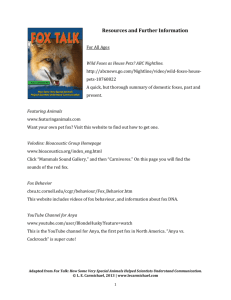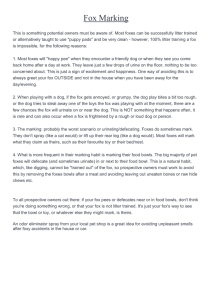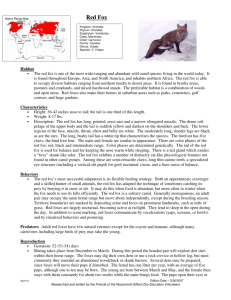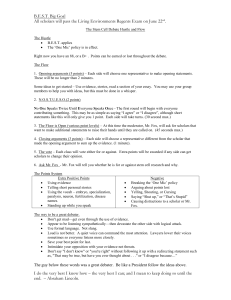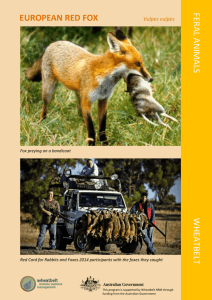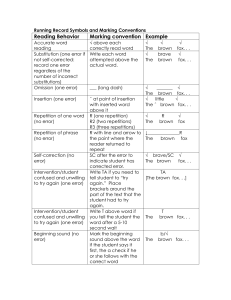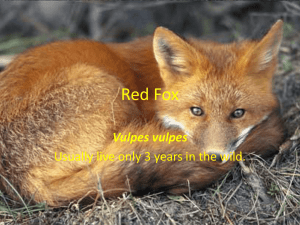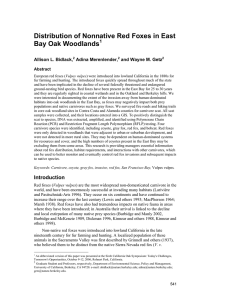animal - Canadian Geographic
advertisement
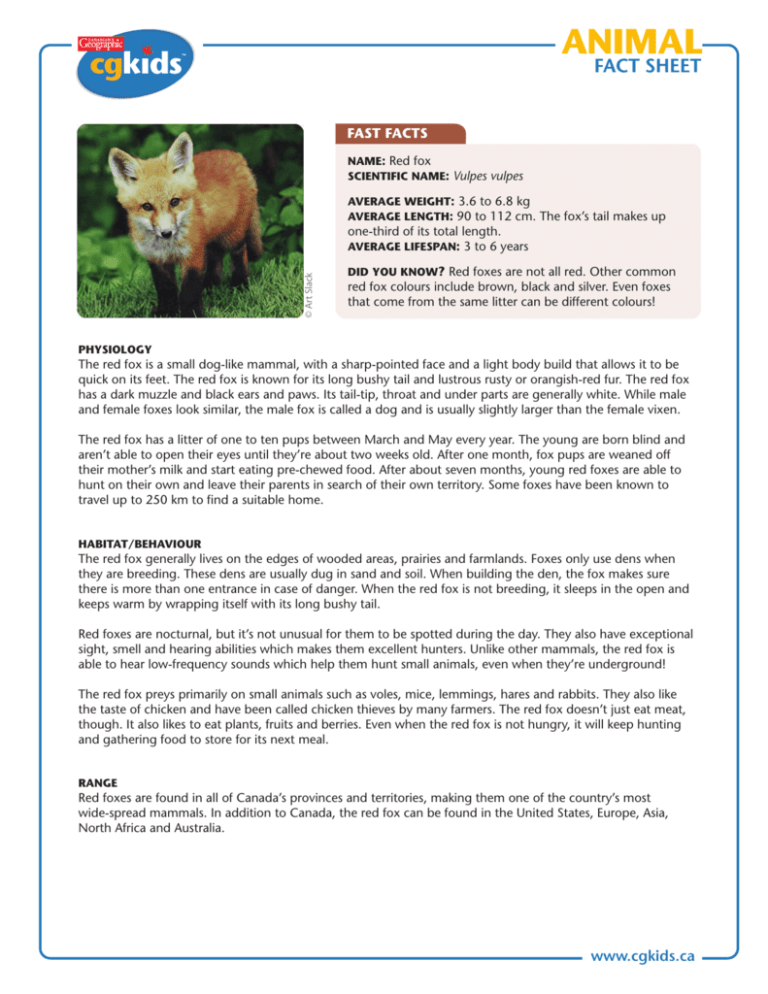
ANIMAL FACT SHEET FAST FACTS NAME: Red fox SCIENTIFIC NAME: Vulpes vulpes AVERAGE WEIGHT: 3.6 to 6.8 kg AVERAGE LENGTH: 90 to 112 cm. The fox’s tail makes up © Art Slack one-third of its total length. AVERAGE LIFESPAN: 3 to 6 years DID YOU KNOW? Red foxes are not all red. Other common red fox colours include brown, black and silver. Even foxes that come from the same litter can be different colours! PHYSIOLOGY The red fox is a small dog-like mammal, with a sharp-pointed face and a light body build that allows it to be quick on its feet. The red fox is known for its long bushy tail and lustrous rusty or orangish-red fur. The red fox has a dark muzzle and black ears and paws. Its tail-tip, throat and under parts are generally white. While male and female foxes look similar, the male fox is called a dog and is usually slightly larger than the female vixen. The red fox has a litter of one to ten pups between March and May every year. The young are born blind and aren’t able to open their eyes until they’re about two weeks old. After one month, fox pups are weaned off their mother’s milk and start eating pre-chewed food. After about seven months, young red foxes are able to hunt on their own and leave their parents in search of their own territory. Some foxes have been known to travel up to 250 km to find a suitable home. HABITAT/BEHAVIOUR The red fox generally lives on the edges of wooded areas, prairies and farmlands. Foxes only use dens when they are breeding. These dens are usually dug in sand and soil. When building the den, the fox makes sure there is more than one entrance in case of danger. When the red fox is not breeding, it sleeps in the open and keeps warm by wrapping itself with its long bushy tail. Red foxes are nocturnal, but it’s not unusual for them to be spotted during the day. They also have exceptional sight, smell and hearing abilities which makes them excellent hunters. Unlike other mammals, the red fox is able to hear low-frequency sounds which help them hunt small animals, even when they’re underground! The red fox preys primarily on small animals such as voles, mice, lemmings, hares and rabbits. They also like the taste of chicken and have been called chicken thieves by many farmers. The red fox doesn’t just eat meat, though. It also likes to eat plants, fruits and berries. Even when the red fox is not hungry, it will keep hunting and gathering food to store for its next meal. RANGE Red foxes are found in all of Canada’s provinces and territories, making them one of the country’s most wide-spread mammals. In addition to Canada, the red fox can be found in the United States, Europe, Asia, North Africa and Australia. www.cgkids.ca



